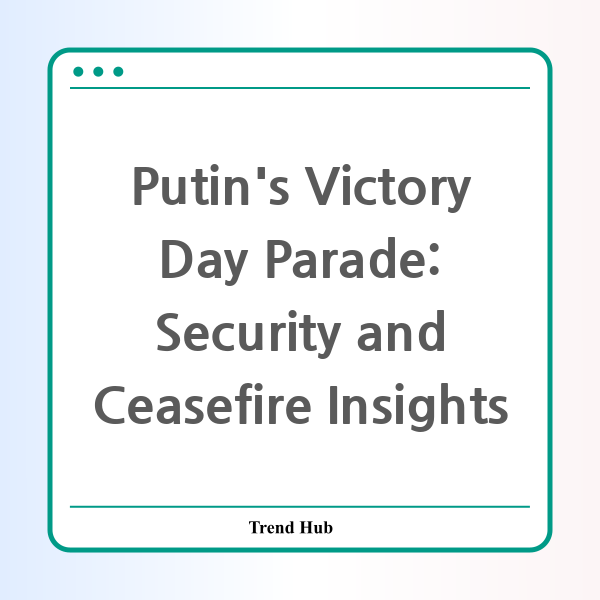* This website participates in the Amazon Affiliate Program and earns from qualifying purchases.

As the world watches with bated breath, Russia has once again made headlines with its grand Victory Day parade in Red Square, led by President Vladimir Putin. This year's event was cloaked in heightened security and a controversial ceasefire, raising questions about the implications for the ongoing conflict in Ukraine.
The much-anticipated parade took place amidst an air of tension, as Ukrainian forces had recently targeted the capital, prompting Russia to enforce strict security protocols. Over 11,000 troops marched through the Red Square, showcasing Russia’s military might, including significant hardware such as Yars missile systems and advanced military jets. This display was not merely a celebration; it was a potent reminder of Russia's military ambitions and its ongoing commitment to what Putin has referred to as the "special military operation" in Ukraine.
During his address, Putin invoked the lessons of World War II, framing the current conflict as a continuation of the struggle against Nazism, albeit distorting the reality by labeling Ukraine’s leadership as fascists. He claimed that the entire nation stood united behind the military campaign, a statement that resonates with nationalistic sentiments but raises eyebrows internationally.
A key aspect of this year's event was the announcement of a unilateral three-day ceasefire coinciding with the Victory Day festivities. However, Ukraine quickly dismissed this as a "theatrical show," arguing that the ceasefire had been violated thousands of times since its implementation. Despite Russia's insistence that the ceasefire was being adhered to, reports of continued attacks and escalations on both sides paint a different picture of the conflict’s reality.
The participation of over 20 international leaders, including China's Xi Jinping and several leaders from nations like Brazil and Venezuela, further complicated the narrative. Such attendance at a time when the international community is largely critical of Russia's actions raises questions about the geopolitical alignments forming in the context of the ongoing conflict. Xi's presence, in particular, was seen as a significant diplomatic victory for Putin, suggesting strong ties amid global tensions.
In contrast, Ukraine's President Volodymyr Zelensky has continuously called for a genuine and unconditional ceasefire, emphasizing the need for real peace negotiations rather than mere symbolic gestures. His call for a longer ceasefire period of at least 30 days highlights the stark contrast in narratives and intentions between the two nations. While Ukraine seeks a path toward lasting peace, Russia's actions suggest a different set of priorities centered around showcasing military strength and maintaining territorial claims.
This year’s Victory Day parade encapsulates a moment in history where past glories are invoked to justify current military actions. The global community watches closely as both sides continue to maneuver in a high-stakes game of strategy and narrative-building. For many, the outcomes of these events will shape the future of not just Russia and Ukraine, but international relations as a whole, as the implications of war, security, and diplomacy unfold on the world stage.
The implications of Putin's rhetoric and military displays cannot be understated; they symbolize a deeper political maneuvering that may influence the course of not only the ongoing conflict but also the dynamics of global alliances. As the situation continues to evolve, it is critical for observers to analyze the narratives being crafted by both Russia and Ukraine, as they navigate their paths amidst a backdrop of historical significance and contemporary crises.
* This website participates in the Amazon Affiliate Program and earns from qualifying purchases.